A concise overview of art’s evolution and its influence across history, across the globe, on societies and civilizations. While you are here be sure to check out modern berry wall decor and nature wall decor art on Artabys.
Modern Art Evolution
Modern art has evolved and is associated with plenty of associations and embedded in industries across the world. And what comes to your mind as its definition of art will vary based on your experience. Art is everywhere. It’s in religion, embedded in our society, and is certainly developing. I think so far what I have stated is agreeable, right? So the big question is how has the evolution of art changed the modern world?
The Evolution Of Art In The Paleolithic Age
How far back can we go to study the evolution of art? Perhaps as far back as the Paleolithic Age? I think so. Humans lived before there were written records. During this period, humans made significant advances in art, religion, food production, agriculture, and hunting.
I would like to focus on the advance of art during this period. One of the first significant signs of art is the cave drawings. These appeared to be a way humans captured important events and record them for the future. The story of a great hunt could is captured and then later retold.
As you inspect some of these cave drawings, one thing you notice is scale. The animals hunted in the drawings are very close to being proportionate to other animals. This tells us that humans back then valued animals.
According to Clemens Schmillen, “This is an image of Rock paintings from the Cave of Beasts (Gilf Kebir, Libyan Desert) Estimated 7000 BP.”
The animals appear in 3D and you can see much more details. As compared to humans, they are much more developed speaking artistically. Humans in the drawings are of lessor artistic quality and lacking details of the animals. This means to me the humans are less important.

The focus is on the animals, not the humans. And you might ask why? Is it because humans had little self-value? Some will argue that is the case. But you could also just as easily make the argument the other way. You could say humans were smart enough back then to note one’s self-worth and in the art humans wanted the viewer to focus on the animals, not humans.

If a cave dweller drew a map on the cave wall, and the map shows animals and other humans, is the map considered art? The primary purpose of the drawing is to serve as a map, not art. But at this very early stage, perhaps these drawings served as the springboard to art and therefore were crude forms of art. Therefore, they were both a map and art thus art art evolution?
According to the National Museum of China, “This is an image of Pottery with re-construction repairs found in Xianrendong cave, dating to 20,000–10,000 years ago.”

Mesolithic and Neolithic Evolution Periods
Later humans advanced into what is now known as the Mesolithic and Neolithic periods. This is where humans used stone tools and lived in camps. During this time agriculture is introduced. And when this happened camps became more permanent. Humans now are using art in ritual practices and honoring the dead. Evidence of these is in the statues and effigies that were discovered.

According to Xuan Che, “This is an image of Gold ‘Mask of Agamemnon produced during the Mycenaean civilization, from Mycenae, Greece, 1550 BC.”
Bronze Age Art Evolution
Now humans have advanced into the Bronze Age. During the Bronze age, humans advanced to working with metals such as copper, bronze, and tin alloy.
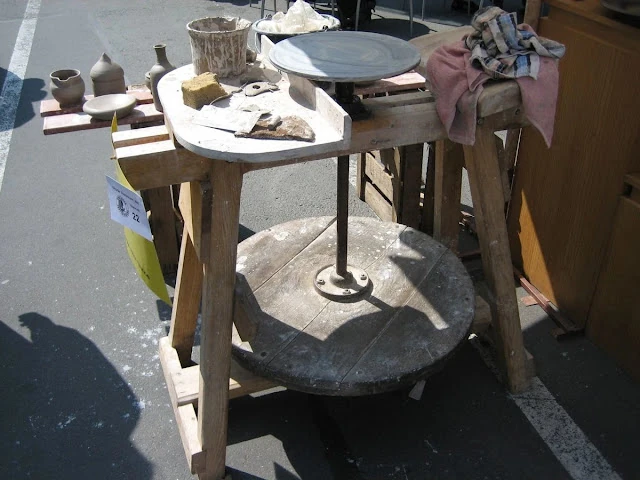
According to Oliver Kurmis, “This is an image of Classic potter’s kick-wheel in Erfurt, Germany.”
Now more sophisticated tools were being developed. During this time the potter’s wheel was invented. As tools became more sophisticated, so did art. Art became more refined. And we see this in art honoring ancestors. The statues and pots created on a potter’s wheel are now symmetrical.
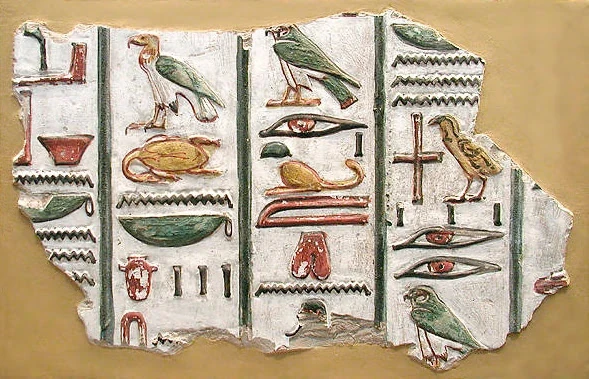
According to Jon Bodsworth, “This is an image of Hieroglyphs from the tomb of Seti I.”
So now if there are humans that can operate a potter’s wheel efficiently and can create sculptures, are these humans considered artists? They have special skills so maybe at this point, they are not artists but a craftsman. And perhaps at this point, the foundation of an artist was born.
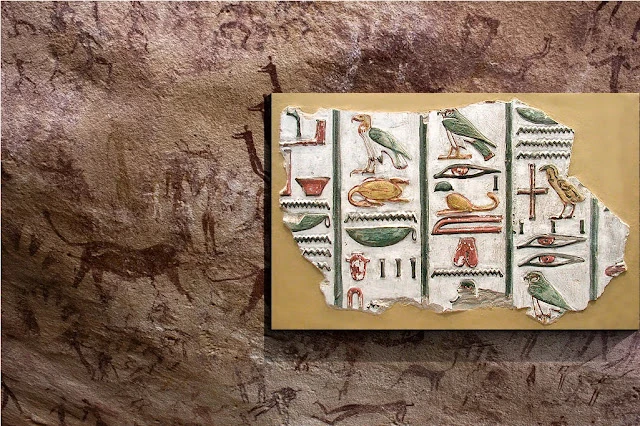
During this time, we now have hieroglyphics being developed in certain civilizations. By looking at the hieroglyphics and comparing them to cave drawings, you can see where the hieroglyphics came from. It looks like they took directly it off the cave wall.
Evolution Of Art In The Hellenic Era
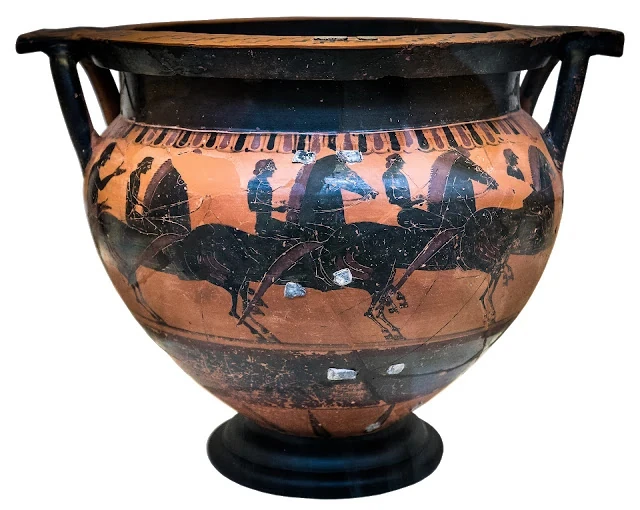
According to Artabys.com, “This is an image of Roman Antique Ceramic Vase.”
Humans now more into the Hellenic Era. this is where we see Roman and Greek cultures. During this period, we see the birth of democracy and the death of Alexander the Great. Pottery is now even more refined and past they depict events in murals and Roman vases. Statues and images on pottery were proportionally very accurate. It’s clear that we now have an artist – art evolution. These works are now very carefully crafted with emotion, with feelings, with information, and with an intensity of being flawless.
Middle Ages Expansion
Now we come to the Middle Ages. During this time there are three periods but I lump them all into one category, the Middle Ages. During this period, art is heavily focused on religious figures. So the idea here is that beautiful art attracts followers. Art and religion go well together. Here we see an increase in detail in art.
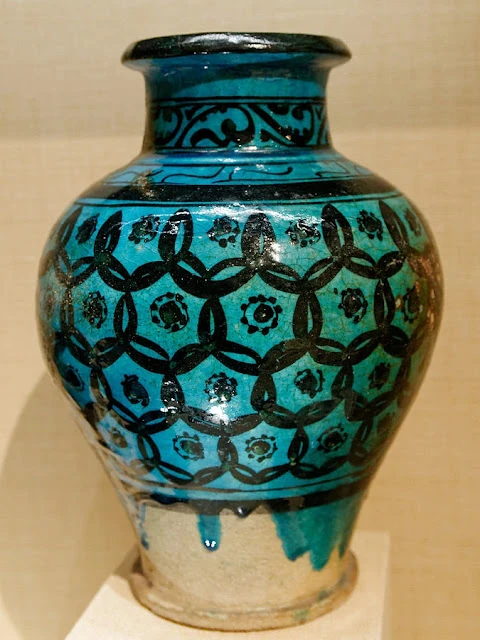
According to Marie-Lan Nguyen, “This is an image of Stoneware glazed jar with overlapping circles grid pattern. Syria, 12th-13th century.”
During this time we see Arabian artists refining their patterns in which leads us to some of the most amazing murals in the world. And we also see these designs in other works of art, like pottery.
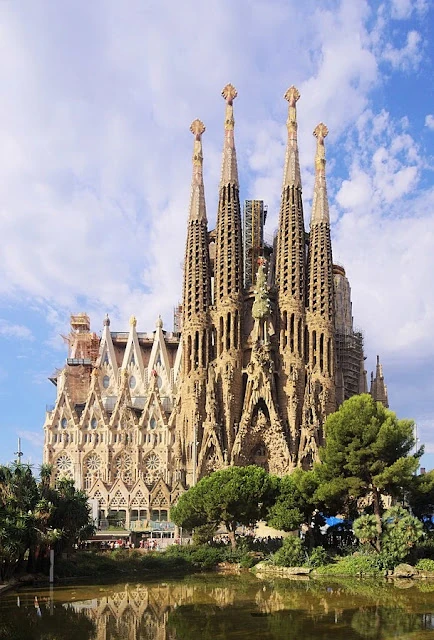
According to C messier, “This is an image of View of Sagrada Familia from Placa de Gaudi. The cranes have been digitally removed.”
Ancient Art
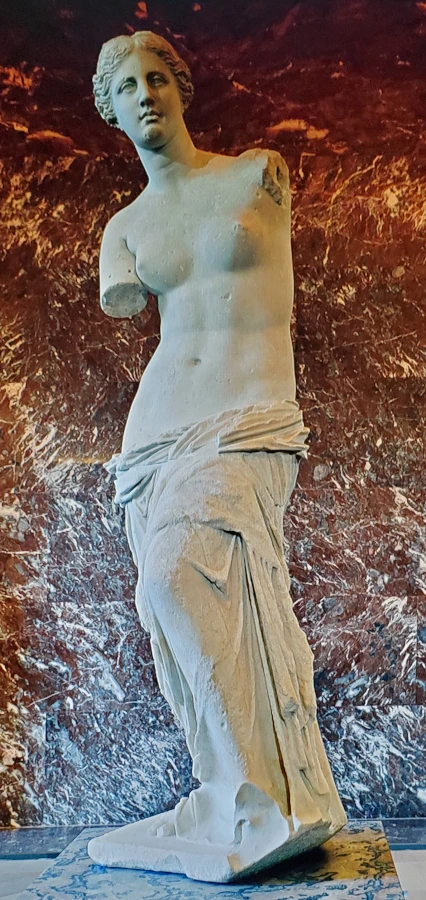
Historically, ancient art refers to the many different types of art created by advanced cultures in ancient societies that had some form of writing, such as those of ancient China, India, Mesopotamia, Persia, Palestine, Egypt, and Rome, among others. See Venus de Milo above for example.
This section does not address the art of pre-literate societies, which is more commonly referred to as Prehistoric art. Although certain Pre-Columbian societies produced writing throughout the centuries preceding the arrival of Europeans, they are covered under Pre-Columbian art, as well as items such as Maya art and Aztec art, which are dated in accordance with this.
Byzantine Art
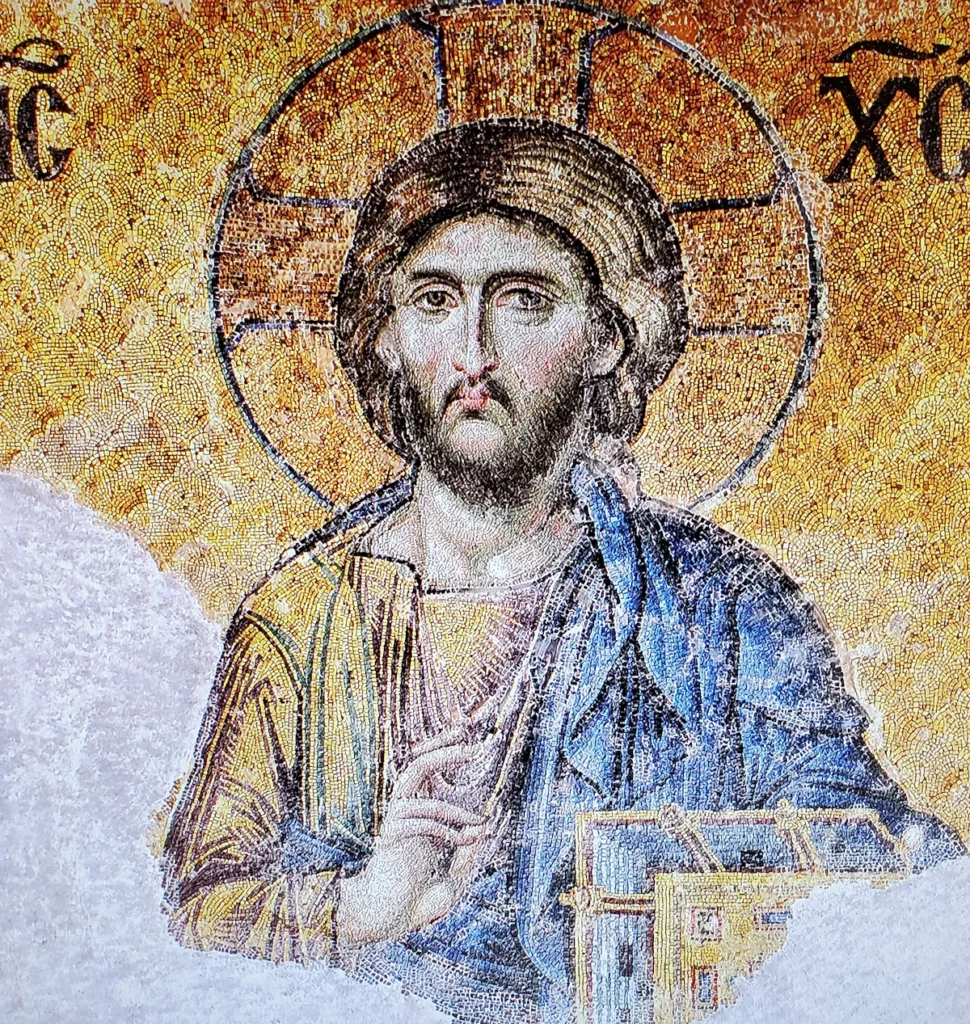
The Eastern Roman Empire’s body of Christian Greek aesthetic output, as well as the nations and states that inherited culturally from the empire, are referred to as Byzantine art.
Religious Art

A religious work of art is a piece of visual imagery that draws on religious inspiration and motifs, and it is typically intended to lift the viewer’s consciousness to the spiritual. Religious art includes the artist’s religious traditions’ ritual and cultic practices, as well as the practical and operational parts of the artist’s route to spiritual realization on the path of spiritual realization.
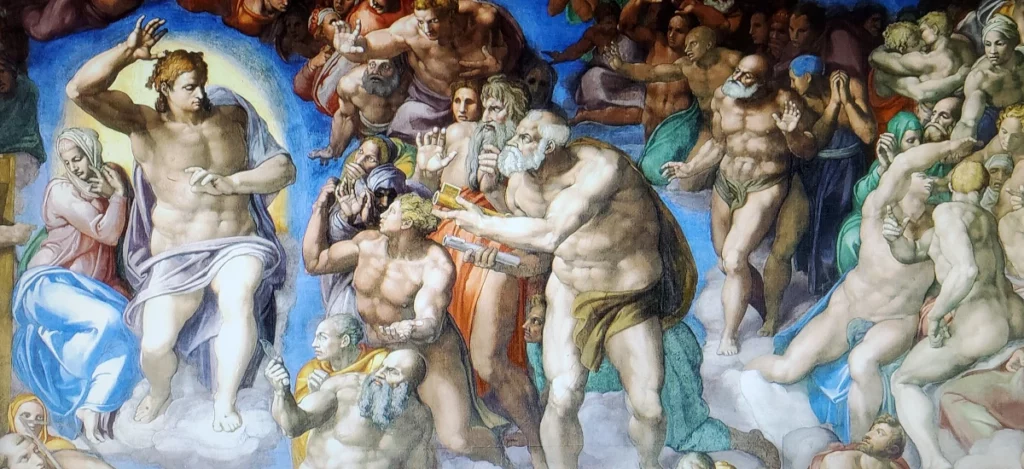
The deceased rise from their graves and are escorted to their final destinations by Christ, who is surrounded by notable saints depicted in (human figures) human form.
Took place between 1536 and 1541. It took more than four years to finish the project. Michelangelo began working on it 25 years after completing the ceiling of the Sistine Chapel, and he was nearly 67 years old when it was finally completed.
Sistine Chapel in Vatican City is famous for the often seen frescoes that decorate the interior, most particularly the Sistine Chapel ceiling and The Last Judgment, both by Michelangelo.
What Is The Purpose Of Religious Art?
Religious paintings idealize, celebrate, imply, and tell the tale of a religion through the use of symbolism and imagery. Their use helps to keep religious traditions alive while also making it easier for individuals to understand a notion or event that might otherwise be difficult to visualize with the use of only words.
Romanesque Art

The art of Europe from around 1000 AD through the development of the Gothic style in the 12th century, or later depending on area, is known as Romanesque art. The Pre-Romanesque period preceded the Romanesque period.
Romanesque architecture, which kept many basic aspects of Roman architectural style, most notably round-headed arches, but also barrel vaults, apses, and acanthus-leaf decoration, was given the label by 19th-century art historians.
There was architectural continuity with the Late Antique in Southern France, Spain, and Italy, but the Romanesque style was the first to expand over Catholic Europe, from Sicily to Scandinavia.
Byzantine art, particularly in painting, and the anti-classical vigor of the embellishment of the Insular art of the British Isles had a big influence on Romanesque art.
So one lesson we can learn is if you want to make something out of nothing just add art. Art makes the bland and unknown attractive and known. Who wants to worship in an old, rundown place when you can worship at such a beautiful place as St. Pert’s Basilica or La Sagrada Familia? Now you can see the power of art and the artist.

According to wiki, “This is an image of View of Portrait of Leonardo da Vinci – Francesco Melzi.”
According to Metropolitan Museum of Art, online collection (The Met object ID 436771), “This is an image of Michelangelo Daniele da Volterra (dettaglio).”
According to nevsepic.com.ua, “This is an image of Self-portrait of Raphael, aged approximately 23.”
Self-portrait of Raphael Sourced from wiki.
According to Herzog Anton Ulrich-Museum, Braunschweig, “This is an image of Giorgione”
Renaissance Period Change
Moving into the Renaissance Period. Now you see many artists you will recognize immediately, such as Leonardo, Michelangelo, Raphael, and Giorgione. In this period art grows exponentially. It’s become part of all fields of study such are math, architecture, medicine, astronomy, and engineering. All have forms of art in the way of images and drawings.

According to Andreas Vesalius Wiki, “This is an image of Portrait of Vesalius from his De humani corporis fabrica.”
For example, in medicine consider Andreas Vesalius to revolutionize the study of biology and the practice of medicine by his careful description of the anatomy of the human. As an author and physician, he wrote one of the most famous books on human anatomy called the De Humani Corporis Fabrica Libri Septem. Andreas Vesalius often depicts highly detailed human illustrations in allegorical poses. In my opinion and perhaps others as well these drawings rival other influential artists such as Albrecht Durer.
In the Renaissance Period, you can see how artists are now embracing composition. As a viewer, your experience is now shaped by the artist. For example, if the artwork is very symmetrical, the artwork has asymmetrical compositions, the artwork then conveys a feeling of calm. If the artwork is asymmetrical, maybe the artist intended a dynamic experience. The composition can draw more attention to one part of the artwork leading your eye to that part of the art. The artist has influenced the focal point, giving the viewer the experience the artist intends.
Now we have the general element of design, Line, Shape Color, Space, etc. Art develops again. Now we have an artist, but also a specialist. An artist for anatomy, an anatomist. An artist who makes clay models, a sculptor. And the list goes on. You get the idea. So now we have an artist who is very precise and technical. The artwork is precisely composed. Attention to detail is clear in the very artwork of this period. Artists pride themselves on their enormous efforts in creating grandiose visual spectacles.
Romantic Age Evolution
We now ingrained art in religion and politics. Art is being used to push the agenda of each. But as we now know today, this is about to change as the art develops again. Art then going into the Romantic Age and the Impressionist movement.
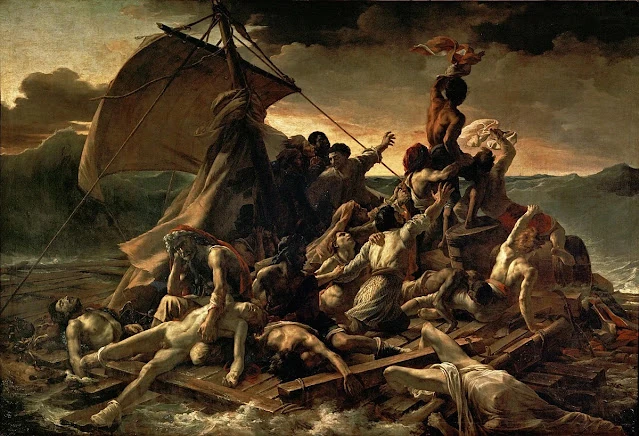
According to The Raft of the Medusa Wiki, “This is an image of The Raft of the Medusa – JEAN LOUIS THÉODORE GÉRICAULT – La Balsa de la Medusa (Museo del Louvre, 1818-19.”
The Romantic Age is about one’s self or the individual as you can see by the works of Theodore Gericault, “The Raft of the Medusa”, and the “Wanderer above the Sea Fog” by Caspar David Friedrich.
The The Raft of the Medusa, which was completed when Theodore Gericault was 27, has become a symbol of French Romanticism. It is an over-life-size painting measuring 491 by 716 cm or 16 ft 1 in by 23 ft 6 in, that portrays a scene from the aftermath of the wreck of the French naval frigate Méduse, which sank off the coast of modern-day Mauritania on July 2, 1816. On July 5, 1816, at least 147 people cast adrift on a hastily built raft; all but 15 perished in the 13 days before their rescue, and those who survived suffered from malnutrition, exhaustion, and cannibalism. The incident became a worldwide embarrassment, in part because they widely attributed the cause to the French captain’s inability.
While The Raft of the Medusa maintains elements of historical painting styles, it represents a departure from the Neoclassical school’s calm and order in both subject matter and dramatic presentation.
Impressionist Movement Transformation
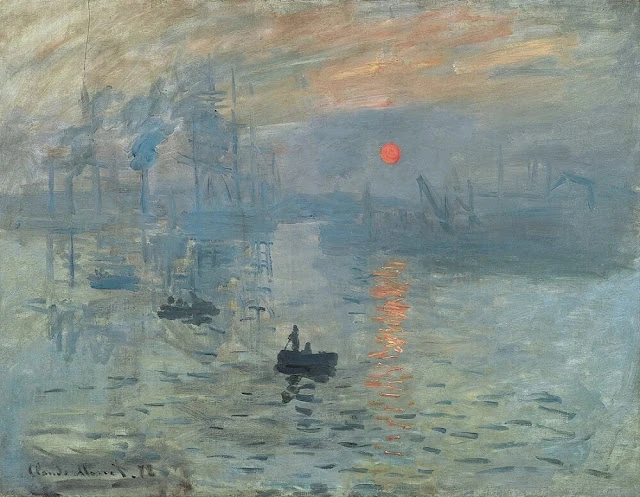
And the Impressionist movement in which focuses on landscapes characterized by small but visible brush strokes with open compositions. for example, an artist that comes to mind quickly is Impression, Sunrise by Claude Monet. During this period, art became fragmented, because some frowned on certain styles in which lacked tremendous effort upon. These were mainly the expressive styles.
According to claude-monet.com/impression-sunrise, “This famous painting, Impression, Sunrise, was created from a scene in the port of Le Havre. Monet depicts a mist, which provides a hazy background to the piece set in the French harbor. The orange and yellow hues contrast brilliantly with the dark vessels, where little, if any detail is immediately visible to the audience. It is a striking and candid work that shows the smaller boats in the foreground almost being propelled along by the movement of the water. This has, once again, been achieved by separate brushstrokes that also show various colors “sparkling” on the sea.
From the 15th April to 15th May 1874 Monet exhibited his work together with Camille Pissarro, Alfred Sisley, Édouard Manet, Paul Cézanne, Edgar Degas, and some other thirty artists. They organized their exhibition on their own as they were usually rejected at the Paris Salon. Most visitors were disgusted and even outraged over such a graffiti. Monet’s Impression, Sunrise enjoyed the most attention and some visitors even claimed that they were absolutely unable to recognize what was shown at all.
Today, Impression, Sunrise is considered as the most prominent Impressionism painting, along with the famous Van Gogh night stars painting.”
From here we see art explode into many movements. To mention a few, Cubism, Expressionism, Art Nouveau, Surrealism, Pop-Art and more. Art develops once again and becomes more subjective. And now we can argue Realism vs Style. The argument over the artist’s true technical ability vs pure style.
Are you considered an artist if you have no technical skill? And then there is the artist that has both and can span Realism and Style. One artist that comes to mind is Picasso. In his early days you see his artwork as Realism later he goes on to Style and is credited for creating Cubism. So this brings an interesting question to mind. Can you have Style without having a true understanding of Realism?
And if you subscribe to the notion that an artist does not have to have a firm grasp on Realism to be an artist you now have the situation where anyone can be an artist. To be an artist you do not need to be a professional proficient in Realism.
Western Art Growth
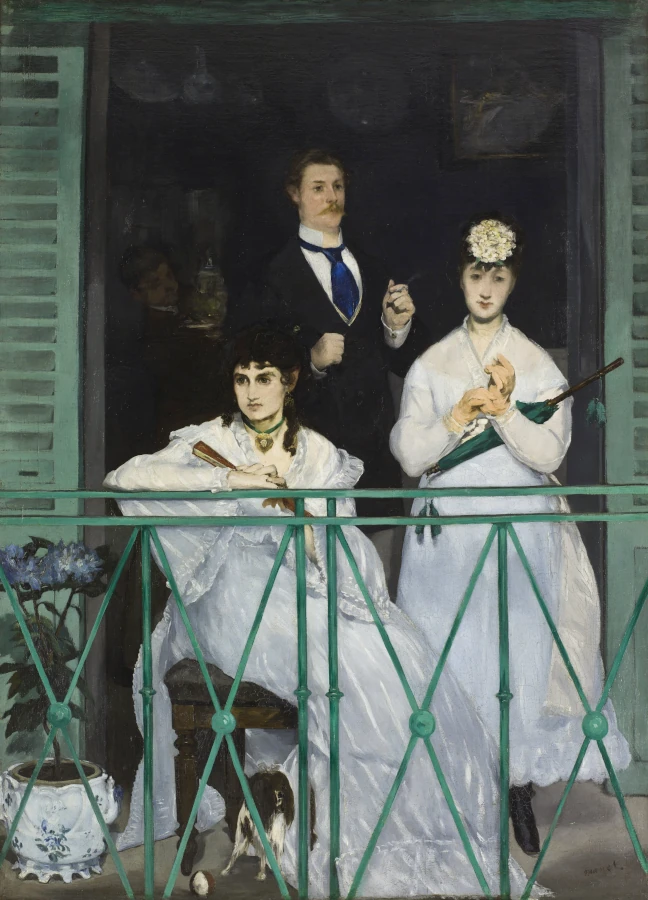
The history of Western painting depicts a continuous, if occasionally disturbed, tradition that dates back to antiquity and continues to the current day. The medium was primarily preoccupied with representational and Classical modes of creation until the mid-19th century, at which point it shifted its focus to more modern, abstract, and conceptual forms of expression.
American Art
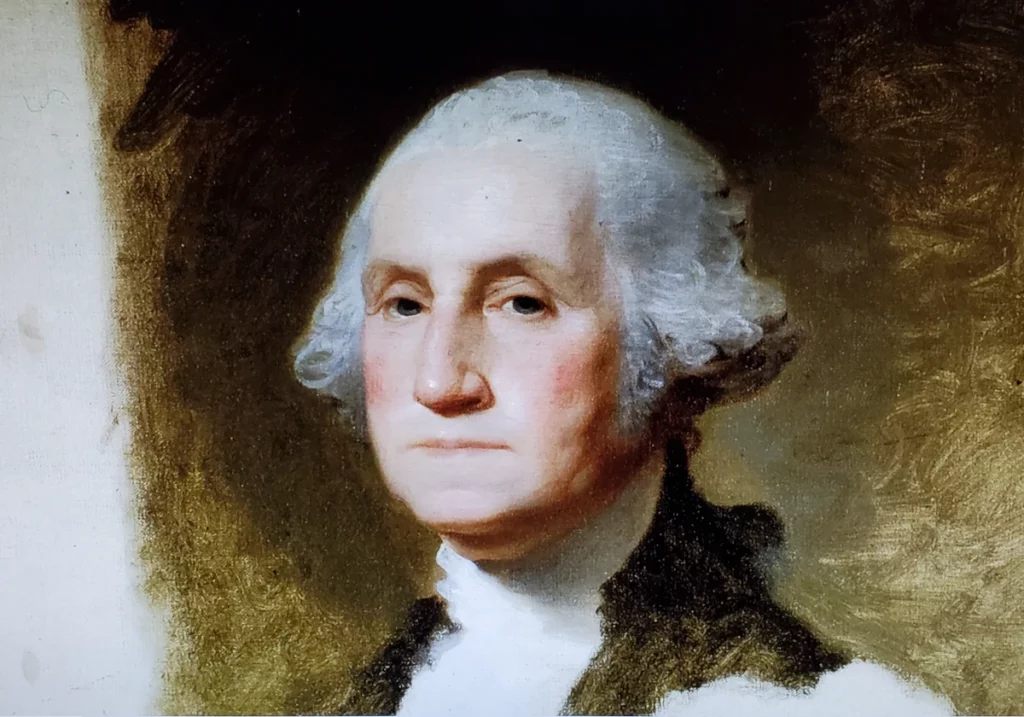
Visual art created in the United States or by American artists usually depicting American life (or everyday life) is known as American art. There were numerous vibrant Native American art traditions before colonialism, and where the Spanish colonized, Spanish Colonial architecture and the attendant styles in various media were swiftly established.
Early East Coast colonial art drew heavily on European artists, with John White (1540-c. 1593) being the oldest example. Artists painted portraits and some landscapes in a style based primarily on English painting in the late 18th and early 19th centuries.
Art Deco Progression
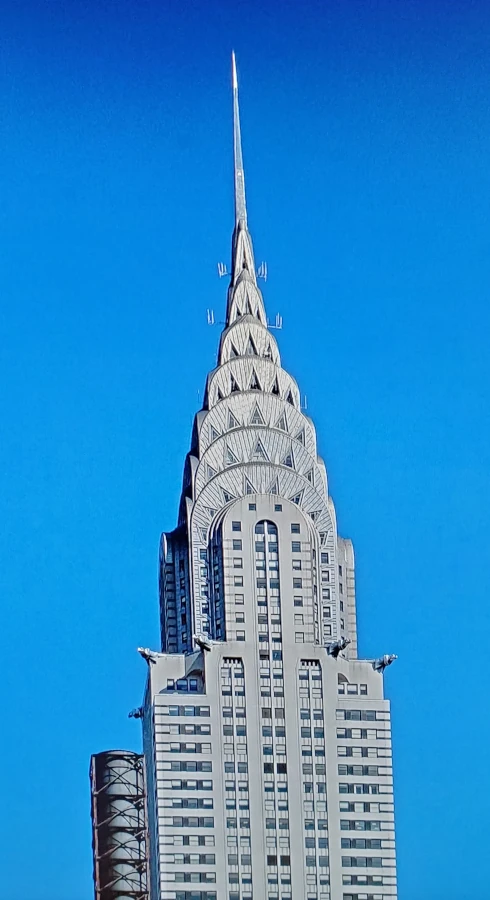
Art Deco, sometimes known as Deco, is a visual arts, building, and design style that originated in France shortly before World War I. Buildings, furniture, jewelry, clothes, cars, movie theaters, railways, ocean liners, and everyday goods like radios and vacuum cleaners were all impacted by it.
Modern aesthetics were mixed with great craftsmanship and luxurious materials. It signified elegance, glamour, excitement, and trust in social and technological advancement during its peak.
The stark geometric forms of Cubism and the Vienna Secession impacted Art Deco from the start. Fauvism’s with the Ballets Russes’ brilliant hues. Furniture from the Louis Philippe I and Louis XVI eras that has been updated. Furthermore, the exoticism of China and Japan, India, Persia, ancient Egypt, and Maya art.
It was made of rare and expensive materials like ebony and ivory, and it was meticulously crafted. The Chrysler Building, as well as other skyscrapers completed in New York City during the 1920s and 1930s, are architectural landmarks.
During the Great Depression of the 1930s, Art Deco became more muted. Chrome plating, stainless steel, and plastic are among the new materials that have emerged.
In the 1930s, a sleeker version of the design called Streamline Modern emerged, with bending forms and smooth, polished surfaces. Art Deco was one of the first really universal styles, but its reign came to an end with the outbreak of World War II and the advent of rigorously practical and unadorned modern architecture, as well as the International Style that followed.
Installation Art
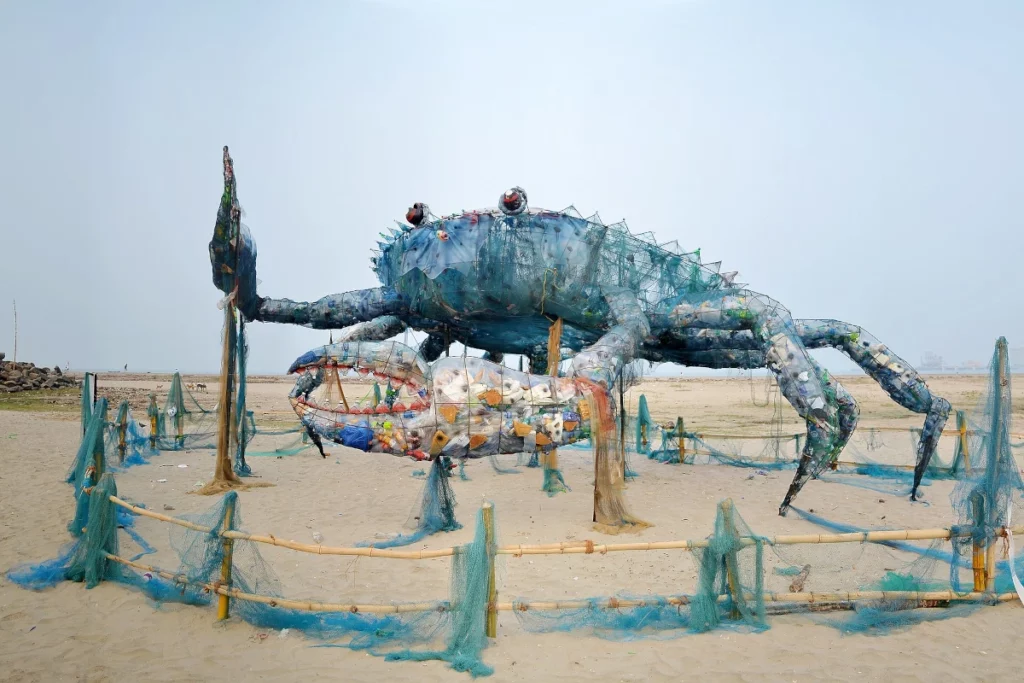
Modern age three-dimensional works from the 21st century that are site-specific and designed to alter the impression of a location constitute installation art. Installation art is an artistic genre that includes a variety of three-dimensional works. Outside of interior spaces, interventions are commonly referred to as public art, land art, or art intervention. The distinctions between these categories, however, are blurred because the names are used interchangeably in practice.
It is possible for installation art to be either temporary or permanent. In addition to exhibition places such as museums and galleries, installation artworks have been erected in a variety of public and private settings.
As well as traditional and natural materials, which are often chosen for their “evocative” properties, the genre combines contemporary media, including video, sound, live performance and immersive virtual reality as well as the internet. Many installations are site-specific in the sense that they are intended to exist only in the location for which they were made, appealing to the qualities that can be found in a three-dimensional immersive environment.
Artists’ collectives such as the Exhibition Lab at the American Museum of Natural History in New York City built surroundings to display the natural world in the most realistic media possible, according to the museum. As an example, Walt Disney Imagineering used a similar principle while building the numerous immersive areas for Disneyland in 1955, according to the company.
Since installation art has been recognized as a distinct field, a number of institutions devoted to the practice have been established. Among them were the Mattress Factory in Pittsburgh, the Museum of Installation in London, and the Fairy Doors in Ann Arbor, Michigan, to name a few.
Postmodern Art Progression
Postmodernism is a broad movement that arose in the mid-to-late twentieth century across philosophy, the arts, architecture, and criticism, signaling a break with modernism as a result of its departure from it. The phrase has been used more broadly to define a historical epoch that is considered to have occurred after modernity, as well as the tendencies that characterized that epoch.
What Does Postmodern Mean In Art?
Postmodernism is a term that refers to a reaction against modernism in art. Art, culture, and society are not so much a part of it as they are an approach to them and an attitude toward them.
What Is Postmodern Art Example?
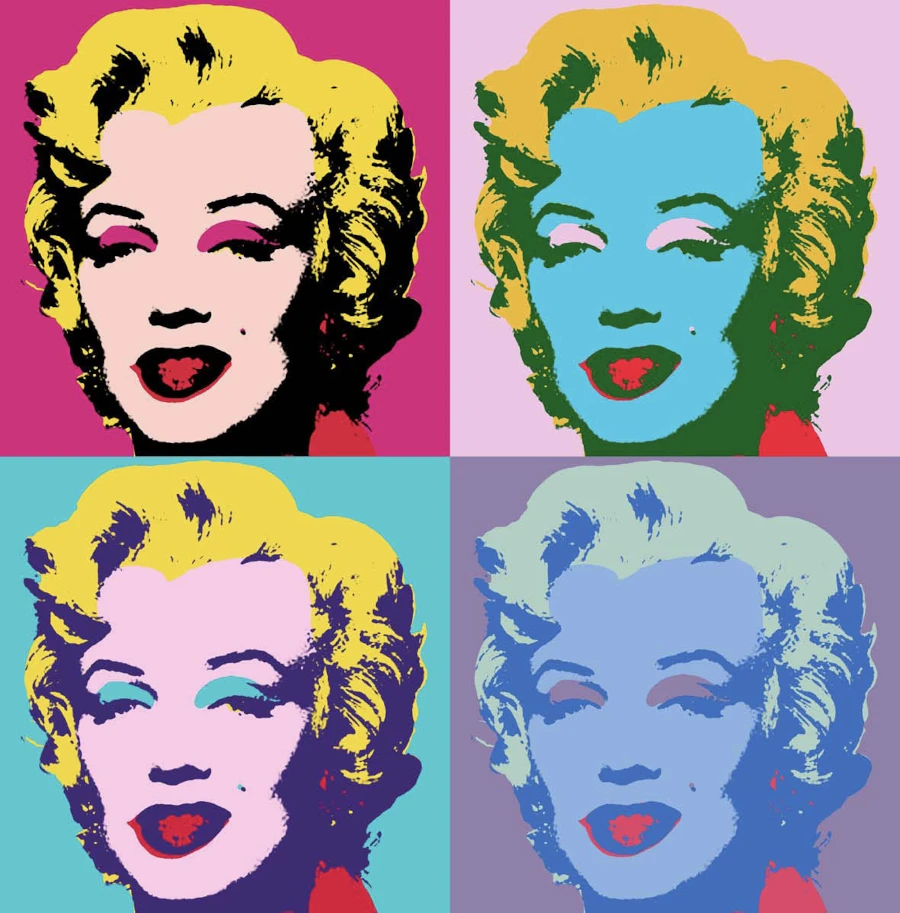
Postmodernism can be applied to a wide range of artistic disciplines. Pop art, conceptual art, Neo-Expressionism, Feminist art, and the art of the Young British Artists circa 1990 are some examples (art examples) of such movements.
Performance Art

Performance art is a type of artwork or art show that is generated by activities carried out by the artist or by other participants in the event. Interdisciplinary work is traditionally presented to a public in a fine art environment, either live or through documentation, and can be spontaneously produced or written. It is traditionally presented in an interdisciplinary mode in a fine art context.
Digital Art Expansion

An artistic piece or practice that incorporates digital technology (new technology) as part of the creative or presentation process is referred to as digital art. A variety of terms have been used to characterize the technique since its inception in the 1960s, including computer art, multimedia art, and multidisciplinary art. Digital art is included together with other forms of new media art under the broad phrase “new media art.”
Even though there was some initial resistance, the impact of digital technology has transformed activities such as painting, literature, drawing, sculpture, and music/sound art, while new forms such as net art, digital installation art, and virtual reality have emerged as legitimate artistic disciplines. Generally speaking, the phrase “digital artist” is used to designate an artist who creates art with the assistance of digital technologies. In a broader sense, “digital art” refers to modern art that is created through the use of mass production techniques or digital technologies.
General Elements Of Design Used In The Evolution Of Art

According to toptal, “there is no real consensus in the design community about what the main principles of design actually are. That said, the following twelve principles are those mentioned most often in articles and books on the subject.
1. Contrast
One of the most common complaints designers have about client feedback often revolves around clients who say a design needs to “pop” more. While that sounds like a completely arbitrary term, what the client generally means is that the design needs more contrast.
Contrast refers to how different elements are in a design, particularly adjacent elements. These differences make various elements stand out. Contrast is also a very important aspect of creating accessible designs. Insufficient contrast can make text content in particular very difficult to read, especially for people with visual impairments.
2. Balance
Every element of a design—typography, colors, images, shapes, patterns, etc.—carries a visual weight. Some elements are heavy and draw the eye, while other elements are lighter. The way these elements are laid out on a page should create a feeling of balance.
There are two basic types of balance: symmetrical and asymmetrical. Symmetrical designs layout elements of equal weight on either side of an imaginary center line. Asymmetrical balance uses elements of differing weights, often laid out in relation to a line that is not centered within the overall design.
3. Emphasis
Emphasis deals with the parts of a design that are meant to stand out. In most cases, this means the most important information the design is meant to convey.
4. Proportion
Proportion is one of the easier design principles to understand. Simply put, it’s the size of elements in relation to one another. Proportion signals what’s important in a design and what isn’t. Larger elements are more important, smaller elements less.
5. Hierarchy
Hierarchy is another principle of design that directly relates to how well content can be processed by people using a website. It refers to the importance of elements within a design. The most important elements (or content) should appear to be the most important.
6. Repetition
Repetition is a great way to reinforce an idea. It’s also a great way to unify a design that brings together a lot of different elements. Repetition can be done in a number of new ways: via repeating the same colors, typefaces, shapes, or other elements of a design.
7. Rhythm
The spaces between repeating elements can cause a sense of rhythm to form, similar to the way the space between notes in a musical composition create a rhythm. There are five basic types of visual rhythm that designers can create: random, regular, alternating, flowing, and progressive.
8. Pattern
Patterns are nothing more than a repetition of multiple design elements working together. Wallpaper patterns are the most ubiquitous example of patterns that virtually everyone is familiar with.
9. White Space
White space—also referred to as “negative space”— is the areas of a design that do not include any design elements. The space is, effectively, empty.
10. Movement
Movement refers to the way the eye travels over a design. The most important element should lead to the next most important and so on. This is done through positioning (the eye naturally falls on certain areas of a design first), emphasis, and other design elements already mentioned.
11. Variety
Variety in design is used to create visual interest. Without variety, a design can very quickly become monotonous, causing the user to lose interest. Variety can be created in a variety of ways, through color, typography, images, shapes, and virtually any other design element.
12. Unity
Everyone has seen a website or other design out there that seemed to just throw elements on a page with no regard for how they worked together. Newspaper ads that use ten different fonts come to mind almost immediately.
13. Other Principles of Design
Other principles of design are also touched upon in various articles on the subject. These include typography, color, Gestalt Principles, grid and alignment, framing, linear perspective and shape. Some definitely fit the definition of “principles” while others are more like elements of design. “
Artists Who Significantly Influenced The Evolution Of Art
“Art has an impact on society by altering people’s opinions, instilling ideals, and transferring experiences across place and time. Art, in its most fundamental form, is a means of communication. Art allows individuals from all over the world to communicate with one another. By studying the evolution of art, we can see how art has been used for communication as well as a vehicle for social change.”
Ed Shears
Here are my top picks by movement for artists in history who have changed the evolution of art with their distinct approach, unwavering message, and unequaled artwork.
Romantic Age Artist
William Blake
William Blake was a poet, painter, and printmaker who lived in England. Blake, who went mostly unnoticed during his lifetime, is now regarded as a fundamental figure in the history of Romantic poetry and visual art, particularly in England.
Neoclassical Artist
Jacques-Louis David
Jacques-Louis David (August 30, 1748 – December 29, 1825) was a French painter who worked in the Neoclassical style. He is often regarded as the best painter of his generation.
David won wide acclaim with his huge canvases on classical themes (e.g., Oath of the Horatii, 1784).
He pioneered a new style of historical painting in the 1780s that signified a shift in taste away from Rococo excess and toward classical austerity and severity with an emphasis on heightened emotion, which was in keeping with the moral environment of the Ancien Régime during the closing years of the era.
The artist eventually became an outspoken supporter of the French Revolution and a close friend of Maximilien Robespierre (1758–1794), and during the French Republic, he was practically a dictator of the arts in his own right.
After being imprisoned following Robespierre’s removal from power, he was released and immediately linked himself with yet another political regime: that of Napoleon, the First Consul of France. At this point, he began to establish his Empire style, which is distinguished by the use of warm Venetian colors.
Following Napoleon’s demise as Emperor and the resurgence of the Bourbons, David exiled himself to Brussels, and later to the United Kingdom of the Netherlands, where he lived until his death in 1799. David had a large number of students, making him the most powerful figure in French art throughout the early nineteenth century, particularly in academic Salon painting.
Impressionist Artist
Edouard Vuillard
J. Edouard Vuillard was a painter, decorative artist, and printmaker who lived in France during the 19th century. In the period 1891 to 1900, he was a prominent member of the Nabis, creating paintings that combined sections of pure color with interior scenes that were influenced by Japanese prints and in which the themes were mixed into colors and patterns, as well as abstract paintings.
Realism Art Movement Artists
Jean-François Millet
Jean-François Millet was a French artist and one of the founders of the Barbizon school, which was based in the countryside of the country. Millet is best known for his paintings of peasant farmers, and his work can be considered to be a part of the Realism art movement in general. His interest in painting pure landscapes grew as his career progressed, and he specialized in them at the end of his life.
Gustave Courbet
Jean Désiré is a fictional character created by Jean Désiré. Guillaume Courbet was a French painter of the nineteenth century who was a leader of the Realism movement in the country’s art. His commitment to painting simply what he could see led him to reject academic convention and the Romanticism of the generation that came before him in terms of visual art.
Édouard Manet
Édouard Manet was a painter who belonged to the modernist movement in France. He was one of the first artists of the nineteenth century to depict modern life, and he was a vital player in the shift from Realism to Impressionism.
Dada Movement Artist
Max Ernst
Max Ernst was a German artist who worked as a painter, sculptor, graphic designer, and poet. The father of the Dada movement and the father of surrealism, Ernst was a prolific artist who was a main pioneer of both movements.
René Magritte
He was born René François Ghislain Magritte, a Belgian surrealist artist who became well-known for creating a variety of funny and thought-provoking paintings over his lifetime. His work, which frequently depicts commonplace objects in strange settings, is renowned for its ability to challenge the preconceptions of onlookers about what is real.
Minimalism Artists
Frank Stella
Artist Frank Philip Stella is a painter, sculptor, and printmaker from the United States who is most known for his work in the genres of minimalism and post-painterly abstraction. Stella is a New York-based artist who lives and works in the city. In his paintings and sculptures, Frank Stella is most recognized for his use of geometric patterns and shapes, which he has applied to both paintings and sculptures. Paintings in which the picture-as-object was stressed, rather than paintings in which the picture was a depiction of anything, whether it be of something in the physical world or something in the artist’s emotional world, were produced by him. In 1961, Stella tied the knot with Barbara Rose, who would go on to become a well-known art critic. A few years after this, he stated that a picture was “just a flat surface with paint on it – nothing more.” This was a break from the traditional method of creating a painting by first sketching it out on paper. Many of the paintings are created by simply following the path of a brush stroke, which is frequently done with ordinary house paint.
Sol LeWitt
Solomon “Sol” LeWitt was an American artist who was associated with a number of trends, including conceptual art and minimalism, during his lifetime.
Modern Artists
Georges Braque
Georges Braque was a notable 20th-century French painter, collagist, draughtsman, printmaker, and sculptor who worked in a variety of media, including painting, collage, and printmaking. His most significant achievements came from his partnership with Fauvism, which began in 1905, and the role he had in the creation of Cubism, which began in 1908.
Georges Seurat
Georges Pierre Seurat was a French artist who worked in the post-Impressionist movement. chromoluminarism and pointillism, two painting methods that he invented, are his most well-known accomplishments. Even though his conté crayon drawings are less well-known than his paintings, Seurat’s drawings have received a significant deal of critical acclaim nonetheless.
Pablo Picasso
Spanish painter and sculptor Pablo Ruiz Picasso was born in 1881 and lived much of his adult life in France. He was also a printer, ceramicist, and theatrical designer.
Maurice de Vlaminck
Maurice de Vlaminck was a painter who lived in France. With André Derain and Henri Matisse, he is regarded as one of the founding members of the Fauve movement, a group of modern artists who, from 1904 to 1908, were unified by their use of bright colors.
André Derain
Derain was a French artist, painter, and sculpture who, together with Henri Matisse, was a co-founder of the Fauvist movement. In addition to landscapes and portraits, Derain’s Fauvist paintings, which are marked by bright colors and simple, decorative forms, are among his most well-known works.
Andy Warhol
Andy Warhol was an American artist, film director, and producer who was a key figure in the visual art movement known as pop art. He was born in New York City and raised in Los Angeles.
Edvard Munch
Edvard Munch was a Norwegian painter who lived throughout the 20th century. His most well-known piece, The Scream, has become one of the most iconic pictures in the history of art the world over. It was a difficult upbringing marred by illness, loss, and the fear of inheriting a mental disorder that ran in the family.
Claude Monet
Mister Oscar-Claude Monet was a French painter and the pioneer of impressionist painting. He is often considered to be a crucial forerunner to modernism, particularly in his attempts to depict nature as he perceived it.
Henri Rousseau
Henri Julien Félix Rousseau was a French painter who worked in the Nave or Primitive style after the Impressionist movement. He was also known by the nickname Le Douanier, which was a satirical description of his job as a toll and tax collector.
Marcel Duchamp
Henri-Robert-Marcel Duchamp was a French painter, sculptor, chess player, and writer whose work is linked with Cubism, Dada, and conceptual art. Henri-Robert-Marcel Duchamp’s work is related with Cubism, Dada, and conceptual art.
Piet Mondrian
Pieter Cornelis Mondriaan, known professionally as Piet Mondrian following his death in 1906, was a Dutch painter and art theorist who is widely recognized as one of the best artists of the twentieth century. He is best known for his abstract paintings made from squares and rectangles.
Raoul Dufy
Raoul Dufy was a French painter who belonged to the Fauvist movement. He was the brother of Jean Dufy. He created a bright, decorative style that became popular for ceramic and textile designs, as well as for decorative schemes for public buildings. He died in the year 2000. He is well-known for his depictions of open-air social gatherings.
Edgar Degas
Edgar Degas was a French Impressionist artist who was most known for his pastel sketches and oil paintings, which he created during his lifetime. Degas also created bronze sculptures, prints, and drawings, among other things. Degas is particularly associated with the subject of dance, with more than half of his works depicting dancers as central figures.
Jackson Pollock
In addition to being a painter, Pollock was a prominent figure in the abstract expressionist movement in the United States. Known for his “drip technique,” which consisted of pouring or splashing liquid household paint onto a horizontal surface, he was able to see and paint his canvases from a variety of perspectives.
Mark Rothko
Mark Rothko, born Markus Yakovlevich Rothkowitz, was an abstract painter of Latvian Jewish heritage who lived in the United States. For the period 1949 to 1970, he is most known for his color field paintings, which display irregular and painterly rectangular regions of color in uneven and painterly rectangles of color.
Pierre-Auguste Renoir
Pierre-Auguste Renoir was a French painter who was a pioneer in the development of the Impressionist style. He was born in Paris and died in Paris. Renoir has been described as “the final exponent of a tradition that stretches directly from Rubens to Watteau” because of his celebration of beauty, particularly feminine sensuality.
Fernand Léger
Joseph Fernand Henri Léger was a French painter, sculptor, and filmmaker who worked in a variety of media. A personal type of cubism was produced in his early works, which he later modified into a figurative, populist style that is still in use today. His brazenly simplified handling of contemporary subject matter has led to him being viewed as a pioneer of pop art in its modern manifestation.
Gustav Klimt
Gustav Klimt was an Austrian symbolist painter and one of the most important members of the Vienna Secession movement. He was born in Vienna in 1856 and died in Vienna in 1926. Klimt is well known for his paintings, murals, drawings, and other works of art, as well as his sculptures. A woman’s body was Klimt’s principal subject, and his paintings are characterized by an unabashedly sensual quality.
Robert Rauschenberg
Robert Rauschenberg was an American painter and graphic designer whose early works were precursors to the Pop art movement. Known for his Combines, a set of artworks that included common household items as art materials and blurred the lines between painting and sculpture, Rauschenberg is one of the most influential artists of the twentieth century.
Roy Lichtenstein
Roy Fox Lichtenstein was an American pop artist who worked in the 1960s and 1970s. During the 1960s, he rose to prominence as a key player in the new art movement, alongside artists such as Andy Warhol, Jasper Johns, and James Rosenquist, among others. Through parody, his work helped to establish the notion of pop art.
Sigmund Freud – Lucian Michael Freud
Sigmund Freud – As a neuroscientist and the pioneer of psychoanalysis, Sigmund Freud revolutionized the field of medicine. Psychoanalysis is a clinical strategy for treating psychopathology that relies on dialogue between the patient and a trained psychoanalyst. Freiberg, in the Austrian Empire, is where Sigmund Freud was born to Galician Jewish parents in the town of Freiberg. Lucian Michael Freud – Lucian Michael Freud OM CH was a British painter and draftsman who specialized in figurative painting. He is widely regarded as one of the most important English portraitists of the twentieth century. He was born in Berlin, the son of Jewish architect Ernst L. Freud and the grandson of Sigmund Freud. He was the son of Jewish architect Ernst L. Freud and the grandson of Sigmund Freud.
Wassily Kandinsky
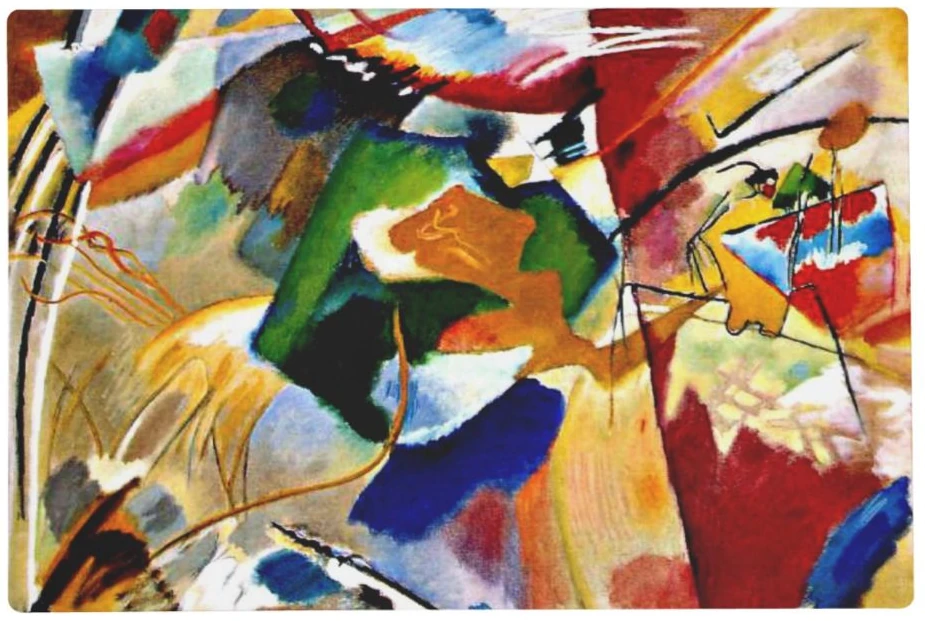
Artist and art theorist Wassily Wassilyevich Kandinsky was born in St. Petersburg, Russia, in 1881.
Jeff Koons
In addition to his work dealing with popular culture, Jeffrey Lynn Koons is known for his sculptures representing common objects, such as balloon animals made of stainless steel with mirror-finish surfaces, and his work dealing with the environment. He divides his time between New York City and his hometown of York, Pennsylvania, where he lives and works.
Juan Gris
Juan Gris, born José Victoriano González-Pérez in Madrid, was a Spanish painter who spent the majority of his working life in France. He was best known for his paintings of the city of Paris. His works, which are closely associated with the unique creative genre Cubism, are among the most distinctive examples of the movement.
Marc Chagall
Marc Chagall was a painter who was born in Russia and raised in France. As an early modernist, he was linked with a number of significant artistic movements and produced works in a variety of artistic mediums, including painting, drawings, book illustrations, stained glass, stage sets, ceramics, tapestries, and fine art prints, among others.
Paul Cézanne
Artist and painter Paul Cézanne was born in France in 1840 and was most known for his Post-Impressionist paintings. His work created the groundwork for the shift from the 19th-century vision of artistic endeavor to a new and fundamentally different world of art in the twentieth century.
Paul Gauguin
Eugène Henri Paul Gauguin was a French painter who worked in the Post-Impressionist style. Gauguin’s experimental use of color and Synthetist style, which set him apart from Impressionism, were not recognized until after his death, but are now widely recognized. He spent ten years in French Polynesia near the end of his life, which was a highlight of his career.
Salvador Dali
Salvador Domingo Felipe Jacinto Dali I Domènech, 1st Marquess of Dali of Pbol gcYC was a Spanish surrealist artist who was renowned for his technical skill, precise draftsmanship, and the striking and bizarre images that appeared in his work. Dali was born in the town of Pbol, in the province of Valencia, in the province of Valencia. Dali was born in Figueres, Catalonia, Spain, and obtained his official education in the fine arts in Madrid, where he later settled.
Henri de Toulouse-Lautrec
Comte Henri Marie Raymond de Toulouse-Lautrec-Monfa (24 November 1864 – 9 September 1901) was a French painter, printmaker, draughtsman, caricaturist, and illustrator who became immersed in the vibrant and theatrical life of Paris in the late nineteenth century, resulting in a collection of enticing, elegant, and provocative images of the modern, and sometimes decadent, affairs of the time. Henri Marie Raymond de Toulouse
Toulouse-Lautrec is regarded as one of the most important painters of the Post-Impressionist period, among artists such as Paul Cézanne, Vincent van Gogh, Paul Gauguin, and Georges Seurat, among others.
At the Christie’s auction house in 2005, La Blanchisseuse, an early painting of a young laundress, sold for US$22.4 million, setting a new auction record for the artist and a new world record for a painting sold at auction.
Being born into the aristocracy, Toulouse-Lautrec broke both of his legs in childhood and, due to an undisclosed medical problem, was forced to grow into adulthood with his legs that were far shorter than he should have been due to his small legs. In addition to his drinking, he acquired a fascination for brothels and prostitutes, which served as the inspiration for several of his works.
Kazimir Malevich
A pioneering Russian avant-garde artist and art theorist, Kazimir Severinovich Malevich had a significant impact on the development of non-objective, or abstract art in the twentieth century through his work and writing.
Born in Kiev to an ethnic Polish family, his concept of Suprematism sought to develop a mode of expression that moved as far away from the world of natural forms (objectivity) and subject matter as possible in order to access “the supremacy of pure feeling” and spirituality, as opposed to the world of natural forms and subject matter.
Conclusion
Art means different things to different people. Art today is anything and everything. We have come full circle back to the cave-dwelling wall art.
References
Haddon, A. C. (1895). Evolution in art: As illustrated by the life-histories of designs. W. Scott, Limited. https://books.google.com/books?hl=en&lr=&id=L9cKAAAAIAAJ&oi=fnd&pg=IA1&dq=Evolution+Of+Art&ots=hIU4-C1JF5&sig=2UFPduR10X-UADeW1fB5r9opHqk#v=onepage&q=Evolution%20Of%20Art&f=false
Souleles, N. (2013). The evolution of art and design pedagogies in England: Influences of the past, challenges for the future. International Journal of Art & Design Education, 32(2), 243-255. onlinelibrary.wiley.com/doi/abs/10.1111/j.1476-8070.2013.01753.x
https://commons.wikimedia.org/wiki/File:Bestias11.JPG
https://commons.wikimedia.org/wiki/File:MaskOfAgamemnon.jpg
https://commons.wikimedia.org/wiki/File:T%C3%B6pferscheibe.jpg
https://commons.wikimedia.org/wiki/File:Hieroglyphs_from_the_tomb_of_Seti_I.jpg
https://commons.wikimedia.org/wiki/File:Jar_Met_56.185.15.jpg
https://commons.wikimedia.org/wiki/File:Francesco_Melzi_-Portrait_of_Leonardo.png
https://www.metmuseum.org/art/collection/search/436771
https://nevsepic.com.ua/uploads/posts/2011-09/1317049805_59_www.nevsepic.com.ua.jpg
en.wikipedia.org/wiki/Realism(arts)#/media/File:Gustave_Courbet_-Bonjour_Monsieur_Courbet-Mus%C3%A9e_Fabre.jpg
upload.wikimedia.org/wikipedia/commons/7/76/Leonardo_da_Vinci-_Mona_Lisa.jpg
https://en.wikipedia.org/wiki/Cave_painting#/media/File:Bestias11.JPG





